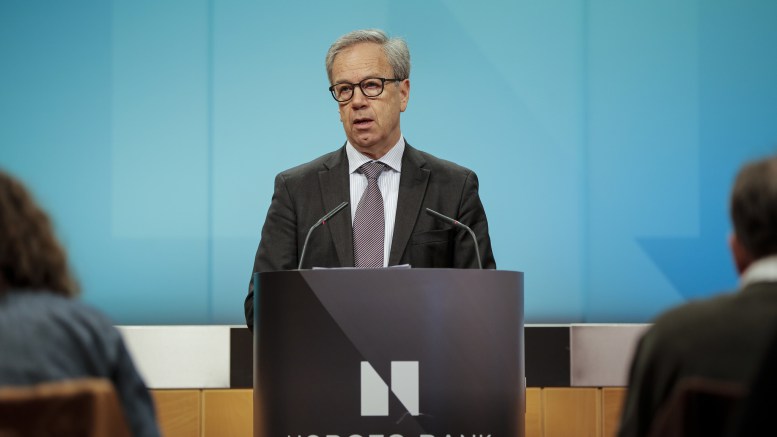Norway’s central bank governor sharpened his warning on rising spending of oil revenue as he drew up scenarios for a 50% loss of capital over the next 10 years for the world’s biggest sovereign wealth fund.
Governor Oystein Olsen said that the continued rise in oil cash spending, which now accounts for about 20% of the budget and 8% of gross domestic product, must now be halted to protect the $900 billion fund, the world’s largest sovereign pool of cash, Bloomberg reported.
“With a high level of oil revenue spending, there’s a risk of a sharp reduction in the fund’s capital,” Olsen said in the traditional annual address in Oslo Thursday. “This could, for example, happen if a global recession triggers both a decline in oil revenue and low or negative returns on the fund’s capital.”
Government withdrawals from the fund are estimated to jump about 25% this year after an historic first outflow last year. The Conservative-led government was last year forced to dip into the oil fund for the first time to cover budget needs and protect the economy amid a plunge in oil prices.
While the fund, which is overseen by the central bank, so far has said it’s more than able to handle outflows without selling assets, Olsen’s speech did lift the lid to reveal some of the worst case scenarios being calculated by the investor.
For example, it sees a 1% chance of a 50% decline over 10 years if spending is kept at the current level of about 3% of the fund. If spending is raised to 4% that probability rises to about 5%. If the fund’s allocation to stocks is boosted to 75% from 60%, which is currently being discussed, the probabilities rise even further to about 2% and 6%, respectively.
“This shows what you may risk if you increase oil spending from today’s level,” Olsen said in a separate interview. “This helps us to strengthen the message.”
The warning came in an embargoed speech and interview, which were later amended after the government on Thursday announced it was tightening the 16-year-old fiscal policy rule to 3% of the fund’s value from 4%, capping spending of oil revenue. The government also proposed to raise the stock portion in the fund to 70% from 60% to help generate higher returns.
While the proposed changes are reasonable, it’s more important to look at spending as a percentage of gross domestic product, Olsen said.


